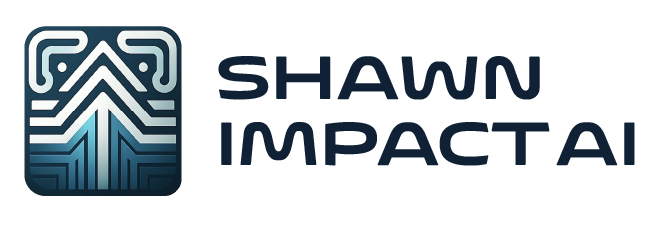STREAMLINE YOUR SOFTWARE PRODUCT MANAGEMENT WITH PRODUCT.IMPACT
Modern product teams don’t fail from lack of talent — they fail from lack of structure. The IMPACT Tech Product Management Framework is a six-stage execution system purpose-built for software and SaaS environments, turning ambiguity into clarity and features into outcomes. Designed for product managers, GTM leaders, and cross-functional squads, this framework embeds validation, prioritization, and telemetry into every stage. It’s how great teams move fast — without moving blind.
Purpose, Scope, & Value
The IMPACT Tech Product Management Framework is a structured, six-stage product execution system purpose-built for modern software and SaaS environments — from insight-rich ideation to validated go-to-market transformation. It enables product teams to move with alignment, clarity, and velocity across the entire lifecycle of discovery, delivery, and iteration.
Designed to replace scattered product rituals with telemetry-anchored discipline, this framework embeds feasibility checks, prioritization guardrails, and stakeholder clarity into every step. It helps organizations continuously ship, learn, and evolve — without losing strategic intent or speed.
It interoperates cleanly with sibling frameworks like IMPACT AI Product Management, IMPACT Tech Product Management, and IMPACT Technical Project Management frameworks, forming a cohesive operating system for AI-native and product-led organizations building in high-velocity environments.
Why it stands apart:
- Aligns product, engineering, design, and GTM around shared context and delivery rhythm
- Reduces feature waste by enforcing real-world validation before scale
- Embeds artifacts like RICE scoring, tracking schemas, and feedback loops as reusable scaffolds
- Turns product ambiguity into structured momentum — from problem framing to post-launch iteration
Guiding Principles
- Outcome-Driven Ideation: Product work begins with real user pain and measurable North Star potential — not roadmap filler.
- Validation Before Velocity: Features don’t move forward until risks are exposed, scope is aligned, and team confidence is earned.
- Artifacts Over Assumptions: Each stage generates living documentation — from stakeholder sign-offs to risk matrices — that create memory across teams.
- Telemetry by Default: Measurement is embedded into every build step — ensuring decisions are data-backed, not instinct-led.
- Aligned with AI.IMPACT: PRODUCT.IMPACT is fully integrated with the AI.IMPACT parent framework, enabling consistent execution across AI-native teams.
Who Is This Framework For
- Product Managers in software, SaaS, or platform teams seeking clarity, structure, and measurable execution.
- Engineering + Design Leads who need aligned input points and delivery feedback loops without PM micromanagement.
- GTM Teams and Founders building feature sets that connect directly to business outcomes and launch readiness.
- Startup or Scaleup Orgs looking to instill repeatable product practices that evolve with team size and complexity.
- Cross-Functional Product Squads operating in fast-moving, high-stakes environments where alignment = velocity.
A 6-stage execution system for modern software & SaaS product leaders.
- I — IDEATE
Goal:
Uncover real user and business problems worth solving, with measurable potential upside.
Inputs:
- Business KPIs (growth, retention, revenue, satisfaction)
- User behavior data, feedback logs
- Stakeholder inputs
Outputs:
- Defined product opportunity
- Preliminary North Star Metric
Artifacts:
- Problem Opportunity Brief
- North Star Metric Canvas
Steps:
- Conduct friction audits, stakeholder interviews, and behavioral deep dives
- Frame the problem in terms of outcome gaps (e.g., “onboarding drop-off at step 3”)
- Propose a measurable NSM (e.g., activation rate, usage depth, time-to-value)
- Align with exec, design, and GTM stakeholders on the opportunity’s weight
- M — METHODOLOGY
Goal:
Define a product solution with architectural and experiential feasibility that can be prototyped quickly and tested clearly.
Inputs:
- Validated problem
- Design and tech inputs
- Constraints and edge cases
Outputs:
- Concept-level product architecture
- Build path feasibility check
Artifacts:
- MVP Solution Sketch (flow + architecture overview)
- Feasibility & Risk Review Sheet
Steps:
- Map UX flow + backend system interaction
- Tag risks (dependencies, data gaps, design challenges)
- Build a low-fidelity prototype or system sketch
- Confirm feasibility with engineering, design, and infra
- P — PRIORITIZE
Goal:
Select what to build now based on business impact, speed-to-value, and technical readiness.
Inputs:
- Set of candidate features
- Team capacity + dependencies
- Business urgency
Outputs:
- Ranked feature list
- Release sequence
Artifacts:
- RICE Prioritization Table
- Feature Rollout Plan (Pilot → Beta → GA)
Steps:
- Use RICE to score initiatives (Reach, Impact, Confidence, Effort)
- Adjust for technical constraints and cross-team alignment
- Sequence based on ROI and speed-to-feedback
- Flag any dependencies, rollout blockers, or GTM timing risks
- A — ASCERTAIN
Goal:
Validate scope, risks, and confidence in execution with full team alignment before the first build line is written.
Inputs:
- Final prioritized scope
- MVP solution sketch
- Risk profile
Outputs:
- “Go” readiness sign-off
- Stakeholder alignment
Artifacts:
- Stakeholder Sign-Off Sheet
- Execution Risk Matrix
Steps:
- Run premortems and risk alignment meetings
- Finalize MVP definition + feature flag strategy
- Ensure QA, tracking, and launch plan are embedded
- Secure sign-off from design, eng, product, and GTM leads
- C — CREATE
Goal:
Build the product increment with instrumentation and rollout guardrails baked in.
Inputs:
- Signed-off MVP spec
- QA plan
- Tracking schema
Outputs:
- Live feature in staging or limited release
- Core telemetry captured
Artifacts:
- MVP Build Snapshot
- Metrics Tracking Checklist
Steps:
- Build MVP with event tracking, usage flags, and feedback capture
- Validate pre-launch performance (page loads, API health, UX friction)
- QA and stakeholder walkthrough
- Prepare for Launch Criteria Review
- T — TRANSFORM
Goal:
Use real-world feedback and telemetry to refine, scale, or kill. Ready the system for production or next iteration.
Inputs:
- Usage metrics
- Qualitative feedback
- Infra performance signals
Outputs:
- Decision to scale, optimize, or pivot
- System readiness snapshot
Artifacts:
- Launch Criteria Checklist
- Scale Readiness Plan
Steps:
Capture system learning in product documentation and roadmap backlog

